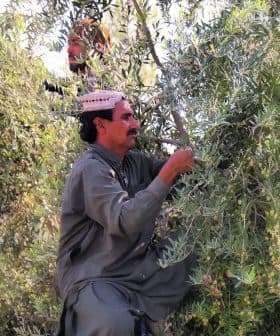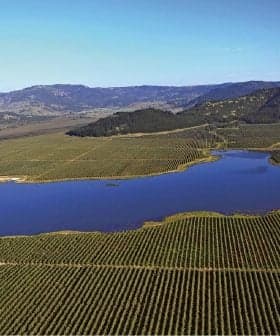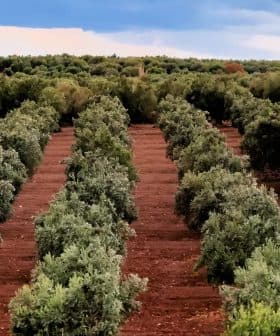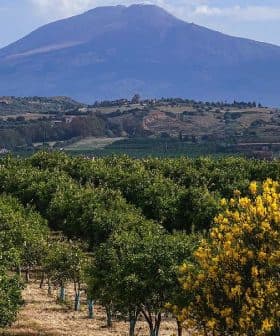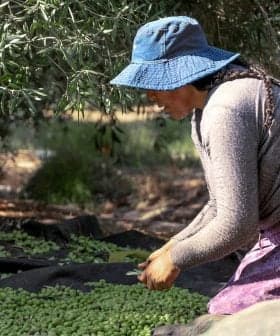After Bumper Harvests, a Sharply Lower Yield in Argentina
An ‘off-year’ harvest, lack of chill hours, and extreme weather events are expected to reduce the yield by as much as 40 percent.
 The harvest will soon be underway in Solfrut's San Juan groves. (Photo: Solfrut)
The harvest will soon be underway in Solfrut's San Juan groves. (Photo: Solfrut) Producers in Argentina are preparing for a disappointing 2024 olive oil harvest, with an estimated 40 percent decrease in production compared to the previous year due to an ‘off-year’ in the natural alternate bearing cycle and adverse weather conditions. Despite the challenges, producers are optimistic due to high international olive oil prices and previous good harvests, but they are wary of potential price drops if Spain has a successful harvest in the upcoming year.
The start of the 2024 harvest in Argentina is fast approaching, with producers across the country’s main olive-growing regions, including La Rioja and San Juan, bracing for a disappointing crop.
While official data have not been published, the Argentina Olive Federation (AOF) estimated that the most significant olive oil-producing nation outside the Mediterranean basin produced 35,000 tons of olive oil in 2023.
This harvest is likely to be worse than the previous one due to climatic factors and because this should be an ‘off-year’ compared to last year.
Some anticipated this year’s yield to fall in line with the average of the previous ‘off-year’ harvests – about 27,000 tons – while others expected it to drop even further.
“The 2024 harvest will be a short one, with an estimated 40 percent decrease in production compared to last year,” Julián Clusellas, president of Valle de la Puerta and an AOF board member, told Olive Oil Times.
See Also:2024 Harvest UpdateBased in La Rioja, the country’s largest olive oil-producing region, Clusellas cited many groves entering an ‘off-year’ in their natural alternate bearing cycle as the main reason for a lower expected harvest.
“There were three consecutive years of good harvests, so this year will be a bad harvest,” he added.
In neighboring San Juan, Guillermo Kemp, the commercial director of Solfrut and another AOF board member, agreed with Clusella’s harvest prediction, adding that some olive-growing regions in Argentina had also faced adverse weather conditions.
“This harvest is likely to be worse than the previous one due to climatic factors and because this should be an ‘off-year’ compared to last year, which was very good,” Kemp said. “The climatic factors have basically been the lack of cold hours in the north – for example, in Chilecito, La Rioja – and on the contrary, we have had frost problems in San Juan.”
On and off years
Olive trees have a natural cycle of alternating high and low production years, known as “on-years” and “off-years,” respectively. During an on-year, the olive trees bear a greater quantity of fruit, resulting in increased olive oil production. Conversely, an “off-year” is characterized by a reduced yield of olives due to the stress from the previous “on year.” Olive oil producers often monitor these cycles to anticipate and plan for variations in production.
Victoria Mercado, the general manager of El Mistol, another San Juan-based producer, agreed that the lack of chill hours in parts of Argentina had exacerbated what was already expected to be a low harvest.
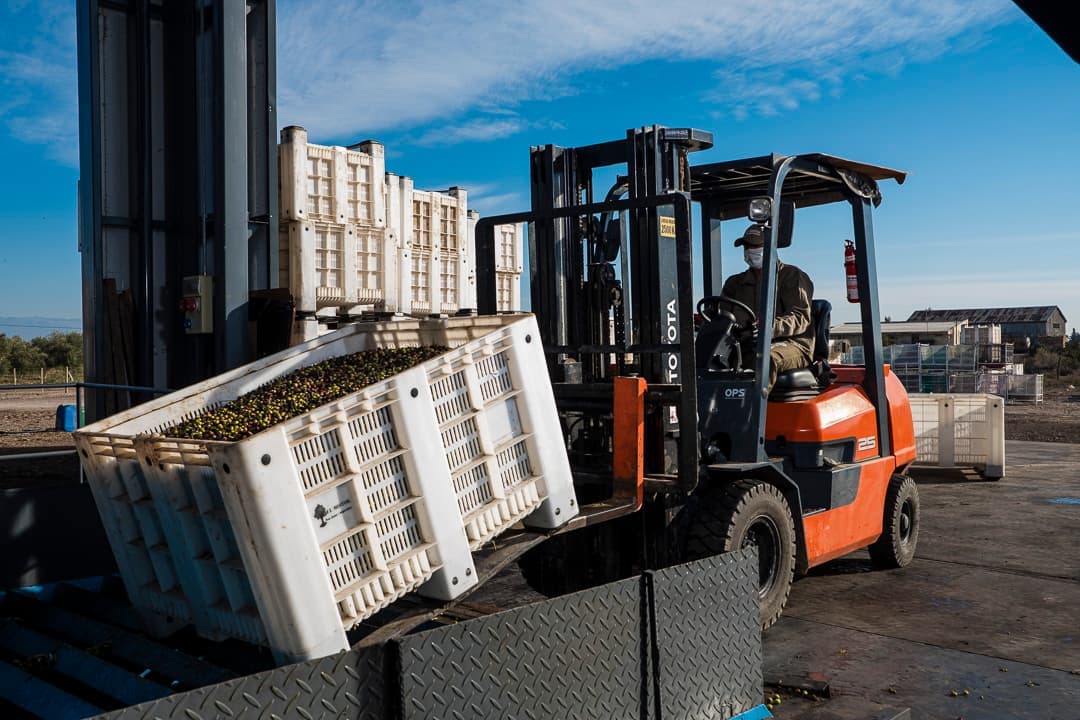
(Photo: El Mistol)
“With this issue of global warming, we had a few hours of cold in the winter, with little thermal amplitude,” she said. “As a result, the olive trees could not produce enough fat to achieve the best yields this year.”
Farther south in Mendoza, the situation is slightly different. The province synonymous with wine production is responsible for less than a tenth of Argentina’s olive oil, with producers anticipating the 2024 harvest to be similar or superior to 2023.
Mario Bustos Carro, the general manager of the Mendoza-based Chamber of Foreign Commerce of Cuyo, told Olive Oil Times that the province produced about 2,500 to 2,800 tons of olive oil in 2023.
“[The situation in the olive groves is] a little better than last year, so far,” he said. “In Mendoza, the olive harvest for oil begins at the end of April, the beginning of May, but January and February are the time of storms with hail.”
“Some very strong ones have already been recorded, and if repeated, they could affect the quantity and quality of production,” he added, emphasizing that it is too early to tell how the harvest will play out.
Along with climatic challenges, olive oil producers anticipate an increase in production costs ahead of the harvest as Argentina’s recently elected government removes subsidies on electricity and fuel to reduce rampant inflation and calibrate the economy.
While the production decrease and rising costs will make producing olive oil more difficult in the short term, Clusellas said producers will manage after another poor harvest in Spain and high international olive oil prices.
Consumption in Argentina remains quite low, with the International Olive Council estimating domestic olive oil intake to reach 7,500 tons in the 2022/23 crop year (which ended in October), or about 250 milliliters per capita.
As a result, most of the country’s production is exported to Brazil, Europe and the United States from the port of Buenos Aires. The IOC anticipated shipments of Argentine olive oil abroad at 26,500 tons in 2022/23.
“Luckily, we had a very good harvest in 2023 with good olive oil prices,” Clusellas said. “Therefore, olive growers are in pretty good health.”
However, he warned that an average or bumper harvest in Spain in the 2024/25 crop year would be disastrous for Argentine producers. “If the harvest goes very well in Spain, prices will fall, and Argentine producers will lose profitability,” Clusellas concluded.
Share this article




